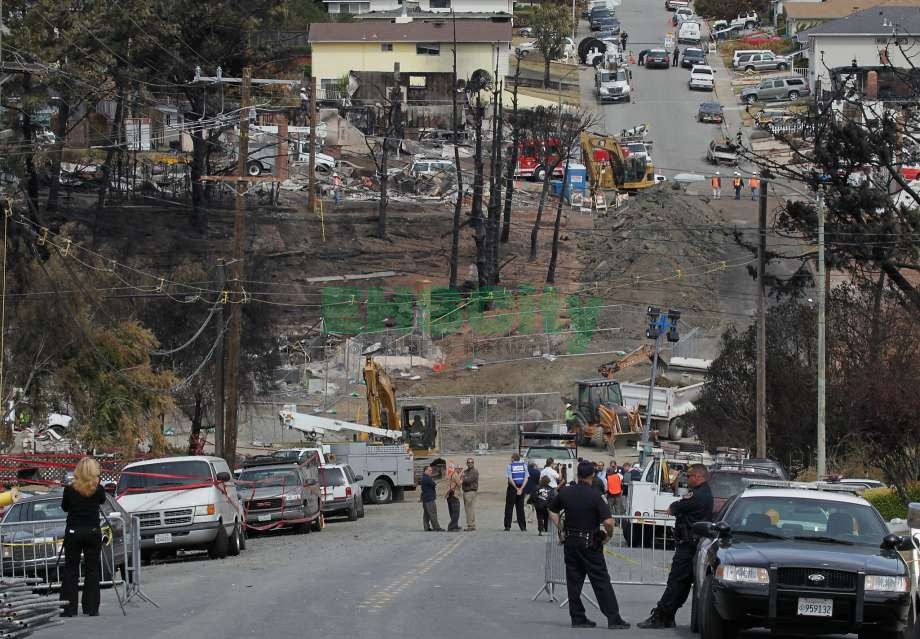
A federal judge has upheld Pacific Gas and Electric Co.’s felony convictions for violating pipeline safety laws, finding ample evidence that the utility ignored or concealed hazards and obstructed the government’s investigation of the lethal San Bruno gas pipeline explosion.
After a six-week trial in San Francisco, a jury convicted PG&E in August of six of 12 felony charges arising from an investigation of the September 2010 explosion and fire that killed eight people, injured 58 and destroyed 38 homes. The cause was a defective seam weld in a transmission pipeline that PG&E charts had described as seamless.
The maximum fine for the convictions is $3 million. Prosecutors had initially sought a fine of up to $562 million, which they said was twice the amount PG&E saved by cutting safety programs, but backed off after U.S. District Judge Thelton Henderson barred much of the evidence they had planned to use to prove illegal cost-cutting. The state Public Utilities Commission, however, has already fined PG&E a record $1.6 billion for the explosion.
PG&E challenged the convictions, arguing that there was no credible evidence that it had knowingly violated safety standards. Henderson disagreed in a ruling Thursday.
The jury was entitled to believe prosecution evidence that the company deliberately chose the least expensive method of inspecting aging pipelines for external signs of corrosion, knowing it could not detect internal problems, Henderson said.
Jurors, therefore, could have rationally concluded that “PG&E employees were motivated to cut corners to save money, despite the dangers involved, perhaps because they were directed to maximize profits or because the company’s financial results factored into employee compensation,” the judge said.
He said there was also credible evidence that PG&E had failed to closely monitor older pipelines, like the Peninsula line that ran through San Bruno, and to test or replace them when gas pressures exceeded federal limits.
The obstruction charge involved PG&E documents, dating back to 2009, that described a practice of allowing pipeline pressure up to 10 percent above federal limits.
PG&E sent a letter to federal regulators in April 2011 saying the 10 percent policy was a draft that had never been implemented, a position also asserted by several past and present company employees at the trial. But Henderson said there was evidence that PG&E employees were instructed to allow gas pressures up to 10 percent above federal limits at a time when company officials knew the practice violated federal law.
Asked for comment, PG&E did not mention the criminal case or the ruling, but said only, “Our focus is on becoming the safest, most reliable energy company in the nation.”

